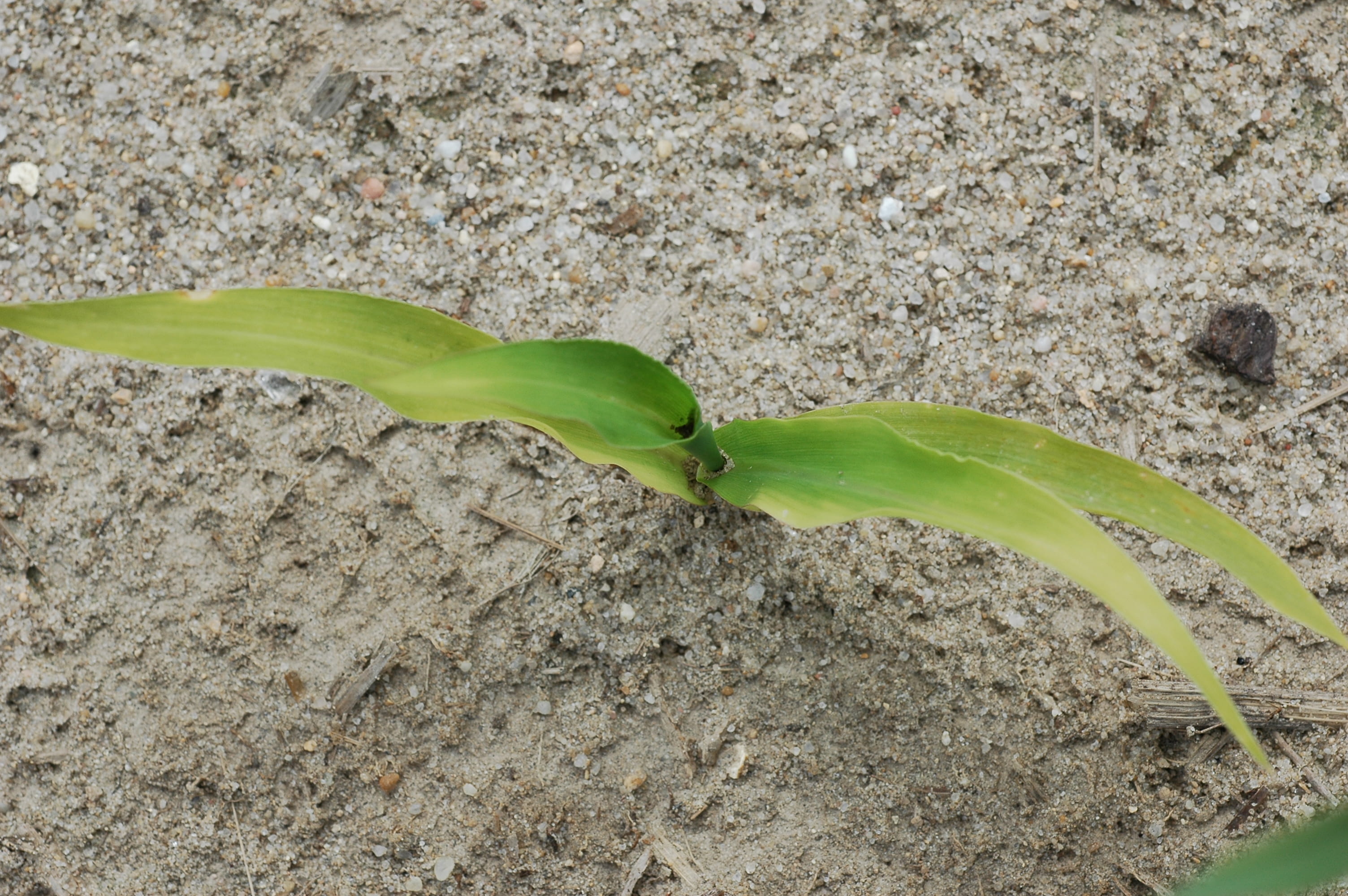Richard Taylor, Extension Agronomy Specialist; rtaylor@udel.edu and Amy Shober, Extension Nutrient Management and Environmental Quality Specialist; ashober@udel.edu
Wet, cool weather has delayed corn planting, or emergence for those growers who were able to begin planting corn. In the past few years, more growers have chosen to include ammonium sulfate in their starter program to help get corn off to a quick and effective start because the incidence of sulfur (S) deficiency has been on the increase.
There are obvious reasons for the increase in early season S deficiency. Sulfur issues were quite rare on corn in the last few decades because crop need was met, or even exceeded, by deposition of S from the atmosphere. Efforts to improve air quality in the U.S. by reducing S emissions from coal powered plants, switching to ultra-low S diesel fuel, improving fuel economy on trucks and cars that use diesel, and many other small steps have resulted in a great reduction in the amount of S deposition from the atmosphere. Sulfur deposition in 1985 was over 25 lbs/acre for much of the upper Midwest and Mid-Atlantic region; but by 2010 (the last available data), the deposition rate had dropped to 5 lbs/acre or less for Delaware and much of the region.
Sulfur in soil exists primarily as the anion sulfate (SO42-), which is subject to leaching similar to nitrate because Delaware soils have very little anion exchange holding capacity and are often quite sandy. Many years ago, Dr. Tom Sims found that, even on the loamy sand soils in southern Delaware, a large amount of S was held in the clay lenses found deep in the soil. Although this S supply can be tapped by the corn plant, it usually doesn’t occur until after sidedress time when the rapid growth phase of corn development begins and the corn roots reach deep enough into the soil profile to take up the stored sulfate. In some cases, early season S deficiency does not impact stand or yield. A number of years ago, a grower reported severe S deficiency on corn grown in a field west of Laurel, Delaware. Dr. Taylor and the county agricultural Extension agent established a sulfur rate study at the site with rates of 0, 20, 40, 60, and 80 pounds of S per acre. Corn responded very quickly to the application of gypsum (calcium sulfate), which did not affect the soil pH. By the time corn in the plots that had received the highest rates of S was chest high, the corn in the control plot (0 lbs S/acre) was still showing severe leaf deficiency symptoms and was barely a foot tall. However, there was no yield difference among the treatments at harvest even though the average yield was well over 200 bushels per acre (irrigated). Corn in the control plots finally grew deep enough roots to access the S stored in the deep soil clay layers and was able to catch up with the fertilized corn. Other studies, however, have shown an occasional response to S fertilizer especially when the slow growth induced by S deficiency results in stand loss.
Sulfur is not mobile in the corn plant so classically S deficiency occurs first on the youngest leaves; it is often described as general yellowing of the leaves (see photos below in the left hand column). In recent years, we’ve noticed that S deficiency shows as interveinal chlorosis of the recently mature (collar visible) leaves (see photos below in the right hand column). A major challenge of dealing with S deficiency involves the ability to correctly determine if the deficiency symptoms will eventually disappear and not affect corn yield potential. As irrigated corn growers push yields higher and higher, or in very favorable growing years when dryland corn yields are exceptional, the risk of S deficiency limiting yield potential is increased. More and more growers are opting to include ammonium sulfate or other S-providing fertilizers in their starter fertilizer package or applying it in combination with an early sidedress application. In general, an application of 30 to 40 lbs S/acre is enough to supply the majority of the crop S need. However, excessive application of ammonium sulfate (or a reduced form of S) can have negative impact on soil pH and require more frequent application of limestone to neutralize the increase in soil acidity.
Air quality improvements of the past 30 years mean that Delaware growers (especially those farming light, sandy soils) will need to spend more dollars on fertilizer to provide S to the corn crop. As a result, growers will probably also need to increase the frequency of lime application. For those growers that have the option of fertilizing with poultry litter/manure, there is some organic S in the litter. However, the organic S is in a reduced form (often in proteins as one of the S-containing amino acids) and must be mineralized in a similar manner as the organic nitrogen (N) in poultry litter. This means that like N, sulfur will become available over an extended period during the growing season since the organic material must be mineralized by the soil microorganisms and won’t be immediately available during the early season growth of corn. Supplemental inorganic S fertilizer will still be needed at planting to avoid the early season impact of S deficiency.
S Deficiency of Corn Showing General Chlorosis or Yellowing
S Deficiency of Corn Showing Interveinal Chlorosis on Leaves






